 CROSSOVER POP
CROSSOVER POP
One of the longest-running — and weirdest — unsolicited celebrity endorsements
Insane Clown Posse mention Faygo a lot and spray concertgoers with it during shows. This has resulted in one of the longest-running instances of an unsolicited celebrity endorsement.
Read the column in the August 29, 2010, New York Times Magazine, or here.
Discuss, make fun of, or praise this column to the skies at the Consumed Facebook page.
Posted Under:
Consumed,
Entertainment
This post was written by Rob Walker on August 28, 2010
Comments Off on In The New York Times Magazine: Involuntary branding

Click it.
Recent feedback suggests I have not made this clear, so let me try again:
I’m not updating this site so much lately (though still sometimes, weekly at a minium) but I do post regularly, and quite a lot, at (among other places):
http://murketing.tumblr.com
The riot of delightful “content” there is suggested by the image above.
AND
http://unconsumption.tumblr.com
The latter also features posts by my fascinator-collaborators. Great stuff. Again, I’ve provided a visual sampler, below. Check it out.
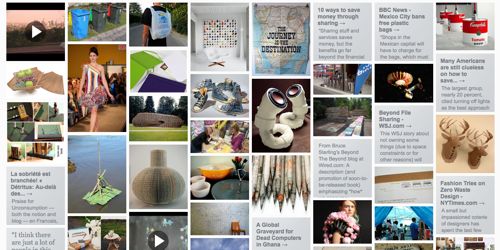
Click it.
Posted Under:
rw
This post was written by Rob Walker on August 25, 2010
Comments Off on Further amusement
 BANANA DEMOCRACY
BANANA DEMOCRACY
A design campaign that has made the most of minimal packaging.
Humans have always noticed novelty, but it’s harder to get our attention in the multicolored and abundant context of a megamart, where one heap of bananas looks much like another. This makes it all the more impressive that Chiquita has received so much notice by being creative with the little blue stickers that adorn its flagship fruit
Read the column in the August 22, 2010, New York Times Magazine, or here.
Discuss, make fun of, or praise this column to the skies at the Consumed Facebook page.
Posted Under:
Consumed,
The Designed Life
This post was written by Rob Walker on August 22, 2010
Comments Off on In The New York Times Magazine: Fruit branding
Q: I just wanted to recommend “Buying In” to someone, and I could not remember the full name, so I went to Amazon, and was surprised to find two full names, one with “The Secret Dialogue” and the other with “What We Buy”. Are these the same book or two different books? I want to make sure that I’m recommending the one I read.
A: Buying In: What We Buy prednisone and Who We Are is in fact the same book as Buying In: The Secret Dialogue Between What We Buy and Who We Are
is in fact the same book as Buying In: The Secret Dialogue Between What We Buy and Who We Are . The publisher thought it would be good to shorten the subtitle when the paperback version was published, because it would “allow for a less-cluttered and more powerful cover design.” Personally I thought the “secret dialogue” bit was the most interesting element of the title, but what do I know? Well, I know what I said when this was suggested: “okay.” It’s actually not all that unusual for books that are, shall we say, not best-sellers, to have their subtitles or even titles tweaked — Tyler Cowen’s last book came out in paper with a completely different title than the hardback version, to name a recent example. In any event, it is the same book; the only difference is that a few typos are corrected in the paperback version. If you recommend either, you should be fine.
. The publisher thought it would be good to shorten the subtitle when the paperback version was published, because it would “allow for a less-cluttered and more powerful cover design.” Personally I thought the “secret dialogue” bit was the most interesting element of the title, but what do I know? Well, I know what I said when this was suggested: “okay.” It’s actually not all that unusual for books that are, shall we say, not best-sellers, to have their subtitles or even titles tweaked — Tyler Cowen’s last book came out in paper with a completely different title than the hardback version, to name a recent example. In any event, it is the same book; the only difference is that a few typos are corrected in the paperback version. If you recommend either, you should be fine.
N.B.: Questions in “Ask Murketing,” basically a new feature, though I may have tried it earlier, are real and verbatim, and selected for inclusion from email I receive because I believe the answer may be relevant, or of interest, to (tramadol) others.
Posted Under:
Ask Murketing,
Buying In (the book)
This post was written by Rob Walker on August 16, 2010
Comments Off on Ask Murketing: What’s up with different subtitles on Buying In?
During a recent viewing of 2001, I got a bit fixated on HAL‘s “eye,” as a kind of icon of creepy machine intelligence that seems like it might be a useful visual reference point for someone to exploit around about now, when speculation, euphoria, and paranoia about computers, privacy, and digital intelligence are frequent topics of discussion:
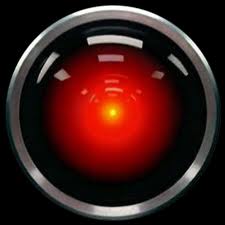
And yesterday E (aware of my interest in the above) pointed out to me this promo image of the next Droid phone.
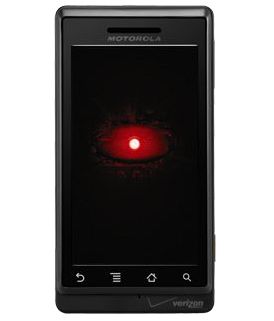
What do you think? Is that an intentional HAL reference?
I started Consumed in 2004, and I think I’ve had five or six corrections — about one a year. Last weekend’s column contained a different sort of mistake — it’s factually correct, so there will be no correction, but I wish I could go back in time and fix it. I quoted from an online tutorial about making wallpaper from book pages: “You don’t necessary need old antique books, just books with pages with a yellow tint.” When I quoted that bit, I just cut the line and pasted it, and put it in quotes. I was reading it as “You don’t necessarily need old antique books, just books with pages with a yellow tint.”
You see the difference, right? I read “necessarily,” but it says “necessary.” Which is ungrammatical, obviously. It was a typo by whoever wrote the tutorial. But I missed that. And I wasn’t the only one, because even in the last page proof I saw, I was still reading it that way, and nobody had changed it — so we were all reading it, I think, as “necessarily.” But between the last proof and the column going to press, somebody caught the mistake, so it ran like this: “You don’t necessary [sic] need old antique books, just books with pages with a yellow tint.”
It happens that I have strong feelings about the use of [sic]. Hackish writers deploy this routinely to make whoever they are quoting look stupid. It’s a very cheap move, and a sure sign, in my view, of third-tier writing. It’s acceptable to use [sic] if there’s no way around it, and it’s sometimes excusable to use it if you’re trying to underscore the sloppiness, or stupidity, or whatever, of some powerful figure — if the president of an Ivy League school made a glaring mistake in some official context, maybe that would get a pass. But in general, [sic] is a cheap move — we all make mistakes, typos, little glitches, that mean nothing. This web site is full of such errors — for all I know this post will contain such errors, because I’m writing it quickly, and I don’t have a proofreader, etc. In other words, I’m no different than the person I quoted making some workaday, meaningless error.
If only I’d noticed it myself! I would have simply paraphrased: “You don’t necessary [sic] need old antique books, just books with pages with a yellow tint,” as “One doesn’t necessarily ‘need old antique books,’ the tutorial reassured, ‘just books with pages with a yellow tint.'” This would have achieved exactly what I wanted to achieve, without a distracting [sic] that appears to poke at some random person’s random typo. But because I failed to pay close enough attention, the latter scenario is exactly what came to pass.
I regret the error.
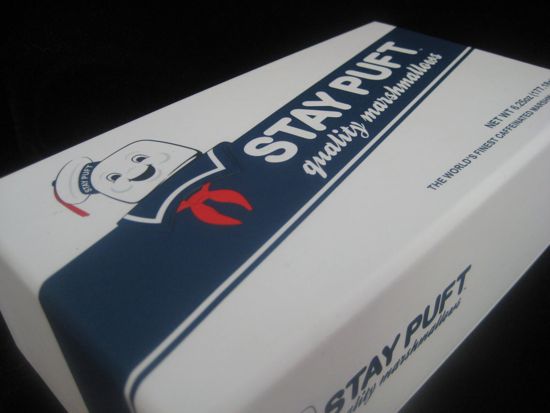
Omni Consumer Products Corporation, leading the way in making imaginary brands into actual buyable products (and written about Consumed a while back) has sent me an advance sample of its next big offering: Stay Puft Quality Marshmallows. They are caffeinated.
Yikes.
Look out for them…
Posted Under:
Imaginary Brands
This post was written by Rob Walker on August 13, 2010
Comments Off on Next up from Omni Consumer Products
 SHELF EXPRESSION
SHELF EXPRESSION
Physical books’ bright future — as decorative objects and props.
Set aside any emotional attachment you may feel toward the reading of physical books; the truth is that creative uses for books that do not involve engaging with words on a page already abound.
Read the column in the August 8, 2010, New York Times Magazine, or here.
Discuss, make fun of, or praise this column to the skies at the Consumed Facebook page.
Yes, this column is the culmination of my long-running musings on this subject, here and here.
Posted Under:
Consumed
This post was written by Rob Walker on August 8, 2010
Comments Off on In The New York Times Magazine: Books, the idea
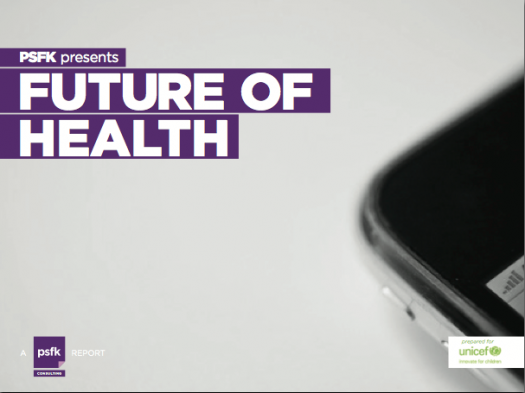
You may have seen this elsewhere online, since it’s been making the rounds, but PSFK (friends of Murketing, I should mention) recently put out a rather massive report full of ideas relating to the future of health care. It takes me days to get through documents like this — more than 200 pages of ideas and concepts, from PSFK itself as well as a battery of agencies they asked to contribute. But I’m always happy to see the various smart people in the trend/marketing/design worlds putting the minds to a problem bigger than, you know, how to sell more stuff. And I have a particular interest in health care being improved by technology and design and so on, both here in the U.S., and in the world’s underdeveloped regions where the problems remain shockingly acute.
One of the dominant problems in both scenarios, I think it’s safe to say, is communication with professionals, so I was pleased to see that listed near the top of the “Challenges” list: “Limited ability to contact physicians and health workers when necessary.” Lots of proposed improvements on that front involve the marriage of mobile technology with the Internet.
The report names ten challenges in all, and the concepts range from self-monitoring ideas to practical design suggestions. Check out the whole thing here. PSFK has also been doling out highlights on its site.
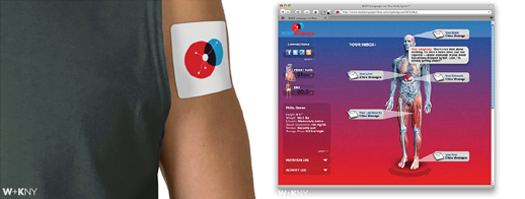
Body Language - Weiden + Kennedy NY
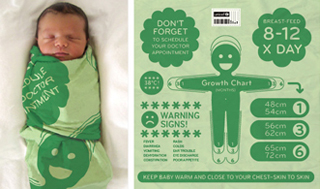
Information Blanket - BMB

CHW Radio Network - Story Worldwide
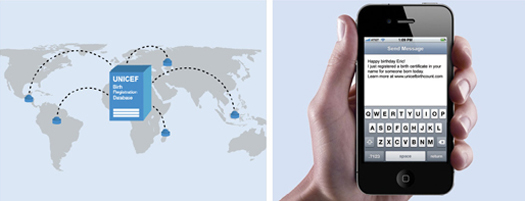
UNICEF SMS - Great Works
Posted Under:
Uncategorized
This post was written by Rob Walker on August 6, 2010
Comments Off on PSFK’s Future of Health Report
In the last couple of months, a number of services and projects have come to my attention (thx: Molly B., Jee W., Grant M., maybe someone else I’m forgetting) that play with the idea of thing-narrative.
The easiest way to explain is by example.
1. Itizen. So you have an object — a thing. You put a special Itizen tag on it: This is either a sticker or sew-on tag with a QR Code on it. You type up the story about your Thing on an Itizen page that correspondonds with that QR code tag. And then, I suppose, you can give the thing away, or sell it, and its new owner can then add his or her own story. This is all rather new, so not surprisingly I don’t see anything with more than two stories so far.
2. Tales of Things. So you have an object — a thing. You write up (or video) its story, and you put a special coded tag on it, and again anyone who accesses that code with an iPhone or whatever will be led to the page where the thing’s story (“describing its history or background”) is told. I’m not sure whether this or Itizen came first, but you can see the similarities. This outfit was involved in a side project, RememberMe, in which the stories of objects in an Oxfam shop were recorded, presumably making the objects more desirable for purchase.
3. D-Build. While this Syracuse, New York, project is primarily concerned with green deconstruction, repurposing the materials from torn-down or refurbished materials into furniture and other objects, it also aims to include a dose of narrative: The creators want people to submit stories (memories, historical information, etc.) about the deconstructed building. (I also mentioned this on Unconsumption.) The idea is to create a “network of information, along with a marketplace for users to exchange reclaimed materials, finished products made of these materials, as well as ideas and services.”
4. StickyBits. This one is an app, and here’s my understanding of how it works. Via this app, you can scan any existing barcode and “attach” whatever information you want, so that whoever scans that barcode in the future will see your added info — a picture, text, whatever. An example they give is adding a recipe to the bar code of a cereal box. But this sounds to me like it could be easily used for more activist or prankish aims, if I understand it right.
You can also get code stickers from StickyBits and attach them to physical objects that don’t have a bar code. The latter scenario again sounds like Tales of Things and Itizen.
Are there others? Have you used any of these (and if so have I described properly)? Are you tempted to?
With the exception of the D-Build example, what these remind me of in a way is how I save and “tag” stories and sites I encounter with Delicious and I guess to some extent with Tumblr. It seems a bit like extending that categorization and archiving impulse into the physical world. It’s possible then that my use of the word “narrative” here is a little off, but I believe that narrative is what all these services aim for.
[Addendum: These examples are all distinct from the manufacturing “narrative” of an object, which I wrote about here and here, and also from made-up “narratives” relating to a thing, such as the Significant Objects stories (or some advertising)].
 THE BORN IDENTITY
THE BORN IDENTITY
Designer diapers join the repertory of child-as-prop tools.
Even in penny-pinching times, parents still want to demonstrate how well (or at least tastefully) they are bringing up baby. Designer diapers are a useful tool for sending that message. And perhaps more to the point, they are also an extension of the well-established tendency among contemporary parents to treat their children as identity props.
Read the column in the August 1, 2010, New York Times Magazine, or here.
Discuss, make fun of, or praise this column to the skies at the Consumed Facebook page.
Posted Under:
Consumed
This post was written by Rob Walker on August 1, 2010
Comments Off on In The New York Times Magazine: Designer diapers
 CROSSOVER POP
CROSSOVER POP



 "
"






















 Kim Fellner's book
Kim Fellner's book  A
A